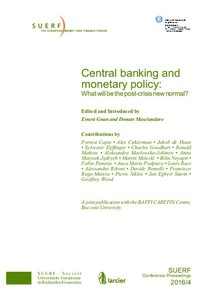Post-crisis regulatory and supervisory arrangements: the new ‘old’ central banking
Aleksandra Maslowska-Jokinen; Anna Matysek-Jedrych
https://urn.fi/URN:NBN:fi-fe2021042715565
Tiivistelmä
The Global Financial Crisis (GFC) exposed clear gaps in the pre-crisis regulatory
and supervisory framework in most of financial systems worldwide, but not in all
financial systems. Optimal design of supervisory and regulatory arrangements in
the post-crisis perspective requires identifying elements that failed in helping
predicting current slowdown, and those that directly or indirectly affected vulnerability
of financial markets. Both tasks appear to be as challenging as twelve
labours of Hercules: demanding, covering wide aspects of financial and macroeconomic
environment, requiring cooperation of many key agents in all markets;
hence truly virtually impossible.
Instead of identifying ‘failed’ elements, we propose the positive approach to the
post-crisis regulatory and supervisory framework, which is proving that some
institutional arrangements and basic elements of financial safety net helped some
countries avoid the crisis.
There are many important questions, which should be treated as a starting point
for discussing changes in supervisory and regulatory framework, especially in
relation to the central banking. Should central banks become less powerful and
be made more subject to political control, or be given more tools to achieve
financial stability? Should the trend of removing central banks from direct supervisory
responsibilities be reversed? Is the period of ‘central banks’ triumph’, a
period in which their independence and autonomy was widely accepted, now
over?
Kokoelmat
- Rinnakkaistallenteet [19207]
